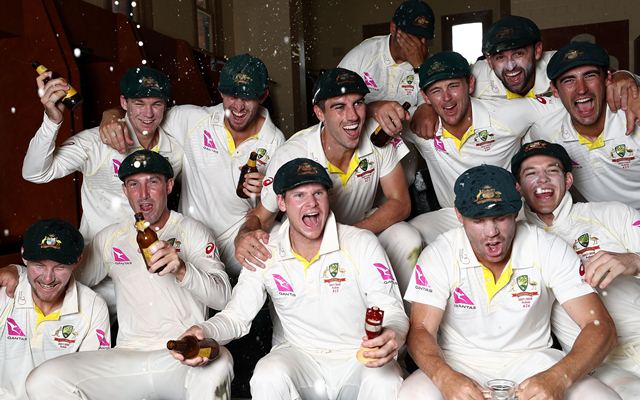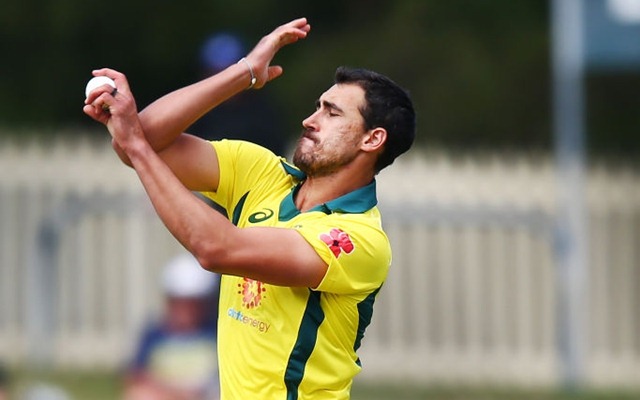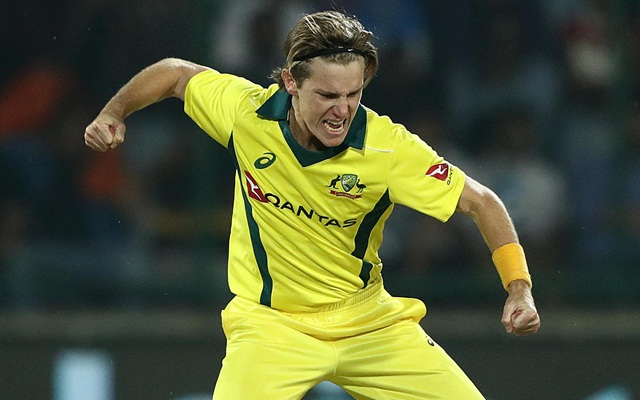Australia's outright team structure and lack of clarity at the heart of their woes
Australia's pace-bowling stocks have boasted of depth and richness in all the eras. Even at present, they possess the former trait, but the affluence is beginning to veer away.
2 Min Read


For a long time before the 2019 World Cup, Australia’s ODI team struggled to find suitable accumulators in the middle-order. Their top-order was strong even without David Warner for a year or so as Aaron Finch’s presence gave them hope of beginning the innings strongly. The middle-order’s ineptness to play spin often threw away a start that usually handed a faith to put on a mammoth total.
They possessed the finishers in their armoury; however, they weren’t playing dual roles. But the men in yellow looked in good shape in that department a few months before defending their title and reasonably okay in England. Nine months post their World Cup semi-final exit, Australia again face numerous problems with regards to their 50-over setup, this time specifically lacking the firepower down the order.
Australia emerged victorious in the T20I series, mainly due to their top-order. They found an escape route during their triumphs in Johannesburg and Cape Town since the top three did the bulk of the work. However, it wasn’t to be in the ODI series in South Africa where they faced their second successive series sweep in the 50-over format. The reading becomes even worse when realized Australia have won only one out of the last 12 ODIs against the Proteas and haven’t beaten them on their turf since 2011.
Finch and Warner have blown hot and cold in the last five games. In the previous three out of five ODIs, Steve Smith and Marnus Labuschagne have done the repair work after early damage and precisely adopted the gameplay needed in the middle-overs. The duo milked the singles and doubles comfortably, but the blindspot was their inability to raise the tempo at will. A skill that modern One-day players must possess.
This weakness was the part of the reason which cost them the match in Rajkot while chasing 341 and in Bangalore where 300-320 had to be achieved while batting first. And their overly-defensive approach yet again betrayed them in pursuit of 292 in Paarl. Why the enforcer Matthew Wade didn’t get a chance in Bloemfontein? Justin Langer’s work to choose between Smith and Labuschagne, two similar type of batsmen in the line-up, might have got even stiffer after the latter’s maiden hundred in the series finale.
But if the aforementioned was the part rationale behind Australia’s recent woes, what is the other? It was the unavailability of proven power-hitters to enhance the score exponentially during the slog overs. And the logical and a natural rebound to the argument would be the deprivation of Glenn Maxwell and Marcus Stoinis.
Are Maxwell and Stoinis really the answers?
And a ricochet to that debate springs the question if Maxwell and Stoinis are actually the solutions? Perhaps, the duo allows Australia to dream in all the facets. Even as the selectors omitted them after a forgettable World Cup campaign, their more than promising Big Bash League season made the critics rethink the decision. Australia failing to take full control from being in a position of power multiple times around Ashton Turner, Mitchell Marsh, and Alex Carey in India and South Africa aggravated the thought.
Maxwell and Stoinis bring optimism and energy to the line-up, be it in terms of batting, bowling, and fielding. However, it is hard to argue with the fact that they haven’t played a significant role in Australia’s victory in ODIs of late. To go with a decent average of 33.87 from 41 ODIs with the bat, none of Stoinis’ fifties and a solitary hundred have resulted in a winning cause.
Perhaps, his slow medium-pace bowling could have been handy in the two-paced decks in South Africa, even taking into account his average of 43. And despite the all-rounder’s woeful run in England that finished with 87 runs in eight games along with seven wickets, he bounced back to top the run-scoring charts in BBL; it still wasn’t enough in clinching a spot against India or South Africa.
That brings us to Glenn Maxwell. The Victorian played a vital role in the series victory against Pakistan before their crown defence and seemed on track to make a massive impact in the UK. During the World Cup, Maxwell’s fluctuating form suggested a big inning around the corner only to fail miserably in the closing stages. And the selectors awarded the all-rounder a recall against the Proteas after his BBL season only to find himself injured at the last hour.
Maxwell’s X-factor is hard to overlook, but he has more often been responsible for Australia’s collapse during middle-overs. And apparently, Maxwell needs to learn the art of not getting carried away too early and stick to the gameplay he did against Pakistan before the World Cup, taking his time out in the middle before launching the onslaught. A strike rate of 123.37 with the bat and his electrifying presence on the field are the only bright spots amongst a batting average of 32.32 and average of 50.50 with the ball after 110 games.
While the selectors have retained the same squad that would face New Zealand next, it remains to be seen whether Mitchell Marsh and Matthew Wade keep their spots when Maxwell or if Stoinis returns. The think-tank also ruled out the chance of bringing Wade for the series finale in Potchefstroom. Amid the ponderousness in the middle-order, it stays unclear how longer a rope will D’arcy Short get, albeit a decent showing in Bloemfontein and Potchefstroom.
All doom and gloom for Australia’s fast bowlers

Australia’s pace-bowling stocks have boasted of depth and richness in all the eras. Even at present, they possess the former trait, but the affluence is beginning to veer away. There is no debate about the likes of Mitchell Starc and Pat Cummins and their venomous abilities to wreck any batting line-up in the world in ODIs. And while they have done it, they haven’t done it consistently and in times when it mattered dearly. Thus, it’s a question about whether the hour has arrived for Australia to look past them. Their numbers ever since the 2019 World Cup have been alarming.
In five matches after the World Cup, Starc has picked up five wickets in five games at an average of 52 while Cummins has bagged six while giving away 44.16 runs. Josh Hazlewood, who completes the illustrious trio, has fared better than the two of them, if not extraordinarily well. Having not been part of the event in England, Hazlewood’s bowling has yielded four wickets in four fixtures at 38.75.
Their colleagues, who have played at least one match each during this period, haven’t had a good time either. Jhye Richardson on Saturday, who played his first ODI since March 2019, bowled with the same intensity, pace, and accuracy too for the most part. However, he couldn’t glean the reward for his hard work. Kane Richardson’s numbers go for a massive letdown as well, having snared three wickets in five games at 59.66. The selectors have not even taken a glance at Nathan Coulter-Nile after his disappointing show during the World Cup.
Unlike the South African bowlers who have more often swung the ball, bowled nagging lines with subtle variations, and yorkers, their counterparts have hardly been able to do it. At best, they managed to keep Quinton De Kock relatively silent. And yet, despite their middle-order possessing way little experience than that of Australia, their batsmen were all over Aussie bowlers.
The statistics speak for themselves. In three games, Australia have picked up only 15 wickets without bowling them out even once while the Proteas have taken 27 wickets by claiming all ten wickets twice. Of the 15 scalps, Australian pacers have snapped ten while out of 27, the Proteas’ pacers have picked 19.
Adam Zampa deserves a better spin-bowling partner

Australia’s plan to groom Ashton Agar as the other half in the spin-bowling department hasn’t gone down well so far. While in the T20 version, Zampa and Agar have complimented each other well, the latter has remained ineffectual in ODIs. Zampa, who endured a disappointing World Cup leg, still remains Australia’s prime spinning option in ODIs. And since the World Cup, Zampa has taken seven wickets in eight games at 36.
While the leg-spinner has been successful in creating the breakthroughs and pressure, the lack of an identical sort of squeeze from the other end during middle-overs is hurting Australia. And that has also resulted in Zampa producing mediocre returns. In the second ODI, Zampa’s bowling ensured not only two wickets, but also the first boundary off him didn’t come until his second last over. Zampa was also their most economical bowler in Bloemfontein and the second-most in Paarl and Potchefstroom.
The selectors also hoped Nathan Lyon could translate his impressive run in Tests in ODIs. And despite Lyon first coming in the reckoning through the BBL, he couldn’t become the giant in limited-overs international that he is in five-day cricket. Labuschagne looms as one more option; however, will Australia go that way after his unprecedented form in the other version of the sport?
One could debate that with the T20 World Cup approaching and Australia looking in excellent nick, the muddles about the 50-over structure can wait. But Australia cannot afford to stride to the 2023 World Cup with yet another messy and unsettled composition. It is safe to say that Langer’s era so far has sparked an improvement in red-ball cricket and a major upswing in the shortest format.
However, the version that lies in between has suffered an appalling slump. The next 50-over edition slated to take place in the sub-continent is all the more reason why the think-tank must confront these issues head-on and immediately.
Download Our App